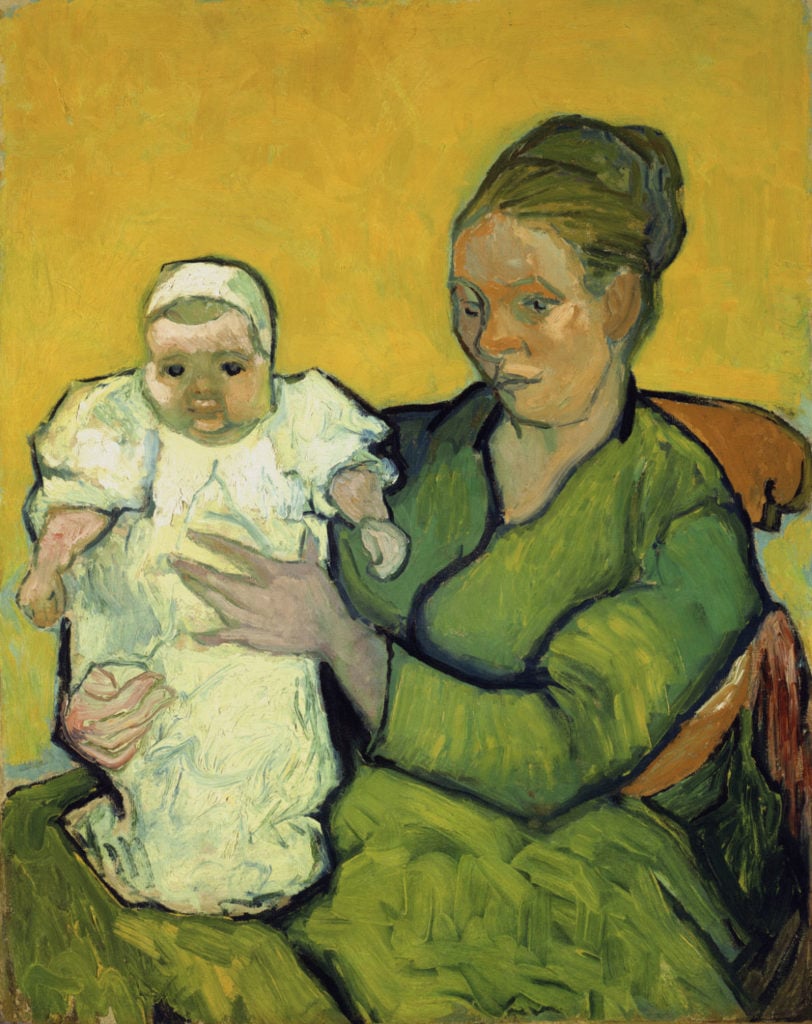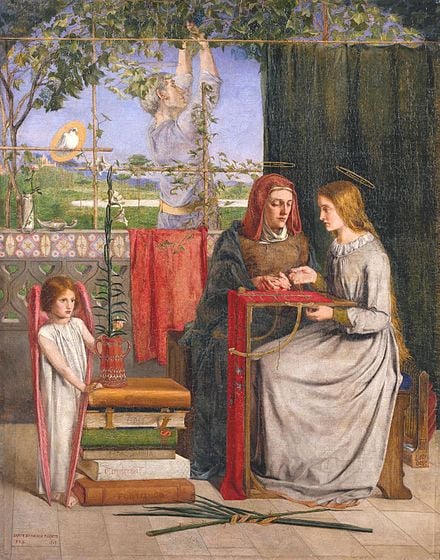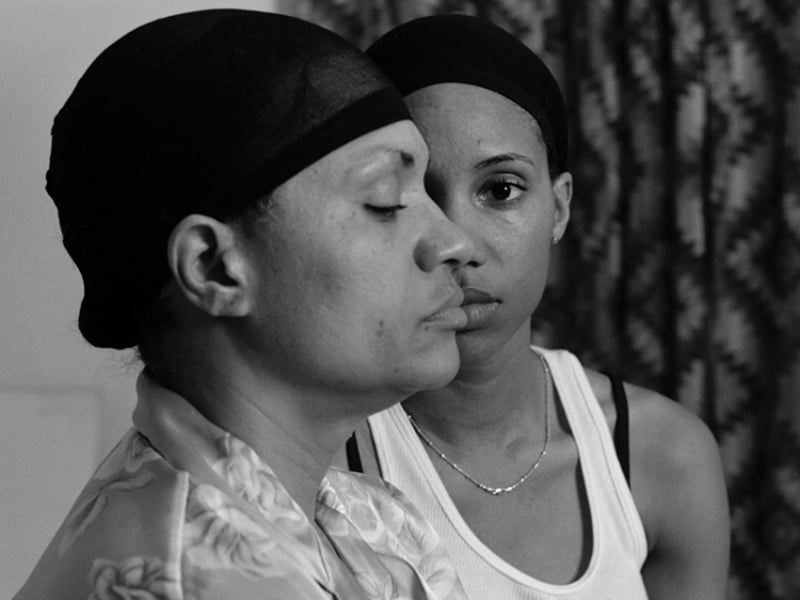Art World
Thanks, Mom! 6 Famous Artists Who Loved Their Mothers So Much They Made Them Their Creative Muses
Since at least the Renaissance, mothers have encouraged—and sometimes inspired—artistic genius.

Since at least the Renaissance, mothers have encouraged—and sometimes inspired—artistic genius.

Katie White

Is there a more complex, loving, and sometimes fraught relationship than that between mother and child? Psychology tomes have been written trying to untangle the nuances and consequences of that very quandary. Perhaps it’s inevitable, then, that over the course of history, mothers of artists would sometimes become their muses. Who could make a more perfect model or a more deserving source of inspiration?
Patient, encouraging, and especially affordable, mothers often make the ideal subject. Albrecht Dürer, for example, certainly thought so, and was one of the earliest artists to capture the likeness of his mother, when, in 1514, he rendered her at 63 years old, aging but resolute. And he was certainly not the last to do so.
Below, discover the tales of artists whose mothers have been immortalized in artworks across the centuries.

Dante Gabriel Rossetti, The Girlhood of Mary Virgin (1849). Courtesy of Wikimedia Commons.
The Daughter of Intellectuals: Perhaps more than most artists, Dante Gabriel Rossetti owes his artistic success to his mother, Frances Mary Lavinia Polidori (later Rossetti), who not only steadfastly supported him but reared him in a heady, intellectual sphere. The daughter of an Anglican high-born governess and an Italian exile to England, Frances married the poet Gabriel Rossetti (who was, coincidentally, also an Italian exile), with whom she had four children—two sons and two daughters. The eldest of her sons, Dante, would go on to become a leader of the Pre-Raphaelite Brotherhood in England.
An Unconventional Educator: An exceptional and avant-garde educator, Frances educated her four children at home, cultivating a vast sweep of interests from medieval history to Italian painting. A devout Anglican, she imbued her lessons with a deep sense of religious interest and moral upstanding, ensuring her children would remain close to her all her life. Sometimes this religiosity had its consequences—Dante first refused to marry and then later all but hid his wife and frequent model, Elizabeth Siddal, from his family for shame of her low-born position.
A Picture of Virtue: Dante would paint his mother repeatedly. One of the more poignant images of her can be found in The Girlhood of Mary Virgin (1849). The image shows his mother as Saint Anne educating the Virgin Mary, who is modeled after his sister, Christina.
Not Her First Rodeo: Rossetti wasn’t the only artist interested in his mother’s likeness. She was also photographed by Lewis Caroll in a work that is on permanent display at the National Gallery in London.

LaToya Ruby Frazier, Momme (2008). Courtesy the artist and Michael Rein, Paris/Brussels. © LaToya Ruby Frazier. Collection of ICA Boston.
A Family Portrait: Photographer LaToya Ruby Frazier’s 2014 book, The Notion of Family, is filled with stark and moving images of her home city of Braddock, Pennsylvania, and has been hailed as one of the best photography books of the 21st century. At the heart of the project are Frazier’s haunting images of her mother and “Grandma Ruby,” lifelong residents of this forgotten American industrial city, who come to embody the personal toll of poverty and societal disenfranchisement.
Constant Collaborator: Among the most stirring portraits in the collection are ones made in collaboration with Frazier’s mom. In these works, Frazier herself at times appears partially obscured by her mother’s figure, like a small child hiding behind her parent’s legs. In another sense, these same images are a window from the past into the future, showing the effects of a lifetime of struggle on the body—but also, in a sense, a kind of hereditary of strength.
Caregiving: Frazier suffers from lupus and her mother has battled cancer. To date, the photographer continues to live close by so they can provide care for each other.

James McNeill Whistler, Arrangement in Grey and Black No.1 (1871). Courtesy of Wikimedia Commons.
American Idol: She’s been called the Victorian Mona Lisa. Anna McNeill Whistler was forever enshrined in the pantheon of artist-mother muses when her son depicted her in profile for as Arrangement in Grey and Black No. 1., an image that has come to signify puritanical American motherhood.
A Lifesaver: Though the work became a symbol of motherhood, it was actually intended as a study in color and composition. As the story goes, McNeill-Whistler offered to pose for her son when his model failed to show up. “To me, it is interesting as a picture of my mother. But what can or ought the public to care about the identity of the portrait?” the artist later wrote. (Apparently, a whole lot.)

Andy Warhol, eating cereal, with his mother, Julia Warhola. Courtesy of Ken Heyman/Woodfin Camp/Woodfin Camp/Time Life Pictures/Getty Images.
Lunchtime Inspirations: Julia Warhola emigrated from modern-day Slovakia to the Pittsburgh area with her husband in 1921. She gave birth to three sons, the youngest of which, Andrej, would become the father of Pop Art. It’s rumored that her frequently served lunches of Campbell’s soup were Andy’s first sources of inspiration.
A Mother’s Touch: Julia Warhola had artistic aspirations herself, but it was her son’s passion that she fostered from childhood. She would sometimes contribute her idiosyncratic penmanship to his works. Occasionally, her own pieces were given their own platform, as with her publication Holy Cats—a book filled with her whimsically drawn depictions of beatific cats—which she signed, not with her own name, but as “Andy Warhol’s Mother.”
Roommates: Warhol adored his mother and she lived with him for many years, up until 1971, a year before her death. In 1966, he made a 66-minute movie called Mrs. Warhol starring his mother as an oft-married aging movie star. Two years after her death in 1974, he painted a portrait of her as well, which he marked with finger-painted squiggles, reminiscent of his childhood art projects. It was the last painting he created in the “old” Factory.
A Bitter End: In the last years of he life, Julia was placed in a nursing home (which Warhol paid for), but though he called her every day, the idea of her death terrified Warhol, who refused to visit her, despite her repeated entreaties. When she died, he paid for her funeral, though he didn’t attend. Later, he grappled with this decision in his diary, wondering if he had made a grave mistake.
Closet Catholic: Though Warhol was a bon vivant, he followed his mother’s wish that he attend mass every Sunday.

Vincent Van Gogh, Memories of the Garden at Etten (1888). Courtesy of Wikimedia Commons. Collection of the Hermitage State Museum.
At-Home Education: Born in the Hague, Anna Carbentus Van Gogh would not marry until the unheard-of age of 32, when she wed the older brother of her art collector brother-in-law, the husband to her younger sister. She was an amateur artist herself and raised her six children in a creatively encouraging home.
A Photo-Likeness: In 1888, Van Gogh painted Portrait of the Artist’s Mother, but unlike most of his portraits it was not made from life. Instead, he worked from a photograph and imbued the image with his vivid sense of color. In the portrait, Anna appears her age, and while not idealized, she looks alert, kindly, and—in sharp distinction from her son—mentally quite stable. Though his mother wrote to him often (quite understandably, she worried over him), this portrait came three years after he last saw her in 1885.
Nature’s Lesson Book: Anna had a green thumb and made sure that all her children helped her in tending to the family garden. Her love of nature was instilled in Vincent at a young age, too. In 1888, he would paint Memories of a Garden in Etten, which shows his mother and two of his sisters in that idyllic place.

Marilyn Minter, Coral Ridge Towers (Mom in Negligee) (1969). Photo: Courtesy of Salon 94.
Art Student: While still an undergraduate student, Marilyn Minter spent a weekend in Florida documenting the daily rituals and comings and goings of her eccentric though glamorous mother. The resulting 12 dynamic photographs have come to be known as the “Coral Ridge Towers” series.
Ready for Her Close-Up: A hazy, Sunset Boulevard-esque allure characterizes these images. Minter’s mother, then-60 years old and struggling with addiction, rarely left the house. She’s captured with noir-like beauty and grit—smoking cigarettes and trying on wigs while wearing a glossy slip in a dramatically lit boudoir.
High Praise: Though most of her classmates were turned off by these unconventional images of her mother, they were a hit with Minter’s visiting professor at the time—who happened to be none other than Diane Arbus.